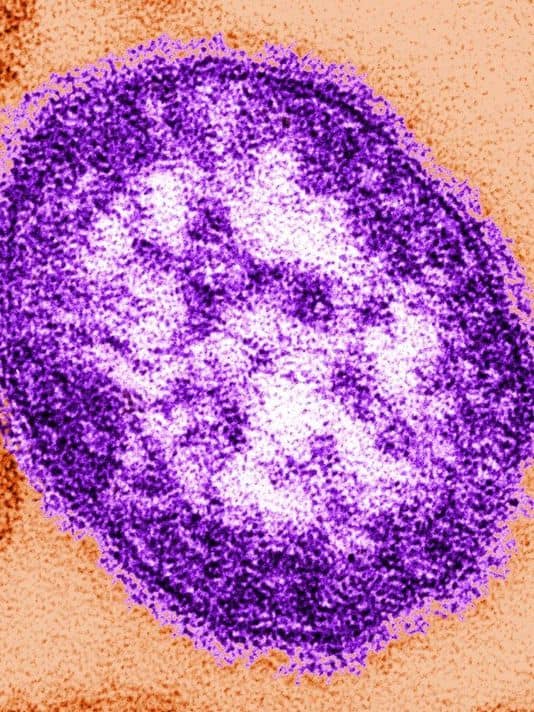
New York state health officials are warning the public about a possible exposure to measles after an Australian tourist was confirmed to have the disease while visiting parts of the Tri-State area earlier this month.
The tourist’s trip to New York, which was between Feb. 16 and 21, included visits to places in the Lower Hudson Valley such as the Watchtower Education Center in Patterson, a Comfort Inn & Suites in Goshen and Orange Regional Medical Center in Middletown.
The travel itinerary, which was provided by the New York State Health Department, also included stops at popular tourist destinations like the Metropolitan Museum of Art in New York City
Measles, a highly contagious virus, can cause serious illness, and even death. Is New York likely to see an epidemic? No, state health officials are saying, noting the risk of developing measles is low, especially for those who have been vaccinated.
But it advises residents to double-check your health records to make sure you’ve received the proper dosage of the immunization against the measles.
Dr. Jeffrey Rabrich, medical director of Nyack Hospital’s emergency room, echoed state officials’ warning on Monday.
“We strongly suggest that everyone should get vaccinated and can refer them to the Centers for Disease Control and Prevention for recommendations,” Rabrich said.
Dr. Jennifer Park of NewYork-Presbyterian Hudson Valley expanded on why even the slimmest risk of a measles outbreak triggers urgent public-health responses.
“Basically, measles is one of the most contagious viruses that we can get,” she said, adding there is a heightened threat to infants too young for vaccines and those who were not immunized in general.
“If they are in the same room with someone infected with measles…they can get it pretty easily,” Park said.
Success against measles in the U.S., however, had unintended consequence, like removing it from health care workers radar.
Park said the American health system in general doesn’t regularly test many patients for measles. It instead relies on health departments’ swift reaction to the rare exposure, which involves tracking and reporting the infected person’s recent activity.
As of Monday, the state health department has not reported any additional cases of measles in New York. Here are some frequently asked questions and answers regarding the measles:
I was at the MET on Feb. 17. Am I going to get measles?
The CDC recommends two doses of the MMR (measles-mumps-rubella) vaccination, so if you’ve only had one, you should probably talk to your doctor about getting another for double protection.
Typically, the first dose should be given at 12-to 15-months old and the second dose between four and six years old, though people may also be vaccinated later in life, health officials said.
New York requires children to receive immunization against measles to enroll in school and daycare. College students have been required since 1990 to provide proof of an MMR (measles, mumps and rubella) vaccination also.
Groups that should strongly consider getting vaccinated: Children, students at colleges, those planning international travel, healthcare personnel and women planning to get pregnant.
Hold off on the shot if you’re sick right now or pregnant, though.
How does the virus spread?
According to the CDC, the virus can be transmitted for four days before and after a rash appears. The virus travels through the air and droplets can remain airborne for up to two hours.
What are the symptoms of infection?
Since symptoms of measles typically appear about 10 to 12 days after exposure, right now people without immunizations against the virus need to contact their doctor if they start to notice a fever, rash, cough, runny nose or watery eyes, officials said on Friday.
It’s not just a rash.
It can lead to ear infections, pneumonia, seizures, brain damage and death. CDC estimates that prior to 1963, when the vaccine became available, between 3 million and 4 million people in the U.S. became infected annually. The infections led to 400 to 500 deaths, 48,000 hospitalizations and 4,000 cases of encephalitis (swelling of the brain), according to the World Health Organization.
With some opting out of the immunization, are the rest of us at a higher risk?
Some people refuse to get vaccinations for religious or medical reasons, while others believe it can lead to autism. If one person has not had the vaccine, they are generally protected by the fact that the majority of people are immunized. However, that could change if fewer people are immunized, according to the CDC.
About nine out of 10 kids in the U.S. receive their measles vaccines and the vaccine’s effectiveness rates about 90 percent, the CDC says.
How do outbreaks happen?
They can occur anywhere there are pockets of people who are unvaccinated.
Measles is still common internationally in countries located in parts of Europe, Asia, Africa and the Pacific. Europe just reported a quadrupling of measles cases last year, an outbreak that led to 35 pediatric deaths, according to the World Health Organization. The virus found its way into pockets of unvaccinated children across the continent from Great Britain to Romania, with 21,315 recorded cases, according to the WHO.
In the U.S., there are generally less than 200 cases a year reported to health officials. This year, there’s been nine so far, according to the CDC.
Travelers with the virus continue to bring it into the U.S.
The disease only spreads where groups of people are unvaccinated, which was the case in 2015, at Disneyland when dozens of people contracted the virus in an outbreak.
California state health officials warned non-immunized people to steer clear of the amusement park, which is located in Orange County, a part of the country popular for the anti-vaccine movement.
No source was ever identified, though the strain was identical to one that caused an outbreak the previous year in the Philippines, according to the CDC.
